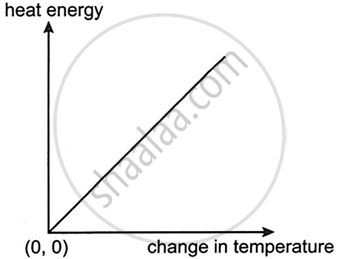Advertisements
Advertisements
Question
- Calculate the heat capacity of a copper vessel of mass 200 g if the specific heat capacity of copper is 410 J kg-1 K-1.
- How much heat energy will be required to increase the temperature of the vessel in part (a) from 25°C to 35°C?
Solution
(a) Given,
mass (m) = 200 g = 0.20 kg
specific heat capacity (c) = 410 J kg-1 K-1
We know that,
Heat capacity (C') = Mass (m) × specific heat capacity (c)
Substituting the values in the formula above we get,
C' = 0.20 × 410 = 82 J K-1
Hence, heat capacity of a copper vessel = 82 J K-1
(b) Change in temperature = 35°C - 25°C = 10°C = 10 K
Energy required to increase the temperature of vessel Q = ?
From relation,
Q = m × c × △T
Substituting the values in the formula above we get,
Q = 0.20 × 410 × 10 = 820 J
Hence, heat energy required to increase the temperature of the vessel = 820 J
RELATED QUESTIONS
Why is the base of a cooking pan generally made thick?
What is the principle of the method of mixtures?
Same amount of heat is supplied to two liquid A and B. The liquid A shows a greater rise in temperature. What can you say about the heat capacity of A as compared to that of B?
The S.I. unit of heat capacity is ______.
Which one of the following statements about thermal conductivity is correct? Give reason.
Define thermal capacity.
Heat capacity C’= ______.
Metals like copper and aluminum are good conductors of heat and electricity.
Water is used as a coolant because it ______.
The graph given below shows heat energy supplied against change in temperature when no energy is lost to the surroundings. The slope of this graph will give:

